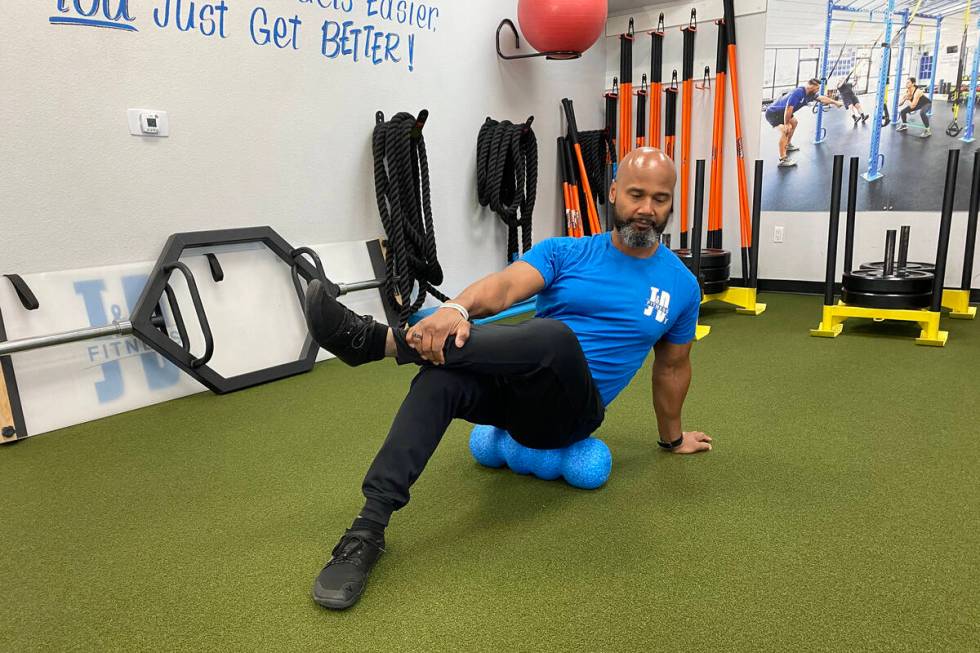Tips for restoring, maintaining mobility after age 50

Bending over to tie your shoes. Working in the garden. Looking over your shoulder to change lanes.
These everyday tasks require a base level of mobility, one that many people find diminishes as they get over 50 years of age.
Mobility is a combination of flexibility (muscle lengthening and shortening), joint health and motor control. Gym-goers tend to prioritize exercises and routines for fat loss, strength and cardiovascular stamina over mobility. It isn’t until they struggle to move that many people accept they need to add mobility drills to their repertoire.
The good news is that mobility can improve as we age.
The first step is to determine your current level of movement competency. An assessment such as the functional movement screen (FMS) is a diagnostic tool that can provide a score for your ankle, hip, thoracic spine and shoulder mobility. The FMS is simple for a trainer or other health professional to administer and provides an easy-to-understand score (0-3).
The objective of any assessment should be to determine a starting point and to define the deficiencies and asymmetries. In areas where there is adequate mobility, the user can adopt a maintenance protocol.
A daily routine
The key to improve mobility is to work on it daily. Research has proven that a better adaptation occurs from frequent brief exposures than from long-duration activities performed infrequently.
Drills that address connective and muscle tissue quality, joint health and the ability to control the body through a full range of motion should not need to exceed more than 30 minutes.
A daily routine can consist of the following:
■ Start with three minutes of crocodile breathing. Lie prone on the ground with the head supported by the hands and perform relaxed deep breaths allowing the ground to provide feedback.
You should feel your trunk lift with each breath, with an emphasis on the exhalation. The purpose of this is to trigger your parasympathetic nervous system. This system is a network of nerves that relaxes your body. It helps perform life-sustaining jobs, such as digestion, during times when you feel safe and relaxed.
It’s beneficial to prime the muscles by having them relax and lengthen before mobility drills. If getting on the floor is a challenge, this can be performed seated in a chair with your hands holding your abdominals for feedback.
■ Next, perform five to seven minutes of myofascial release, a self-massage technique using a foam roller. The goal is to improve tissue quality, enhance blood flow and decrease muscle tightness by slowly rolling an area with the roller five to10 times.
If never performed before, this may initially cause slight discomfort, but that should quickly diminish.
■ The last step is to perform a controlled articular rotation (CAR), which is an active rotational movement at the outer limits of articular motion.
This will appear like a joint circle. (If observing someone perform a shoulder CAR, for example, it should appear as if they were drawing a big circle with a marker in their hand.)
The goal is to restore a healthy range of motion back to the joint. These are performed for the ankles, hips, trunk, shoulders and neck (cervical spine).
The movements should be subtle, slow and under control. Perform three repetitions in each direction. Do not work through pain.
The goal is to create joint independence with movement coming solely from the joint, while minimizing movement from the surrounding areas. These drills can maintain and aid in restoring joint health.
Restoring and maintaining mobility doesn’t have to be hard. It just needs to be a daily practice.
Doug Sheppard is a nationally certified personal trainer with 33 years of experience and the owner of J&D Fitness personal training studio in Las Vegas.